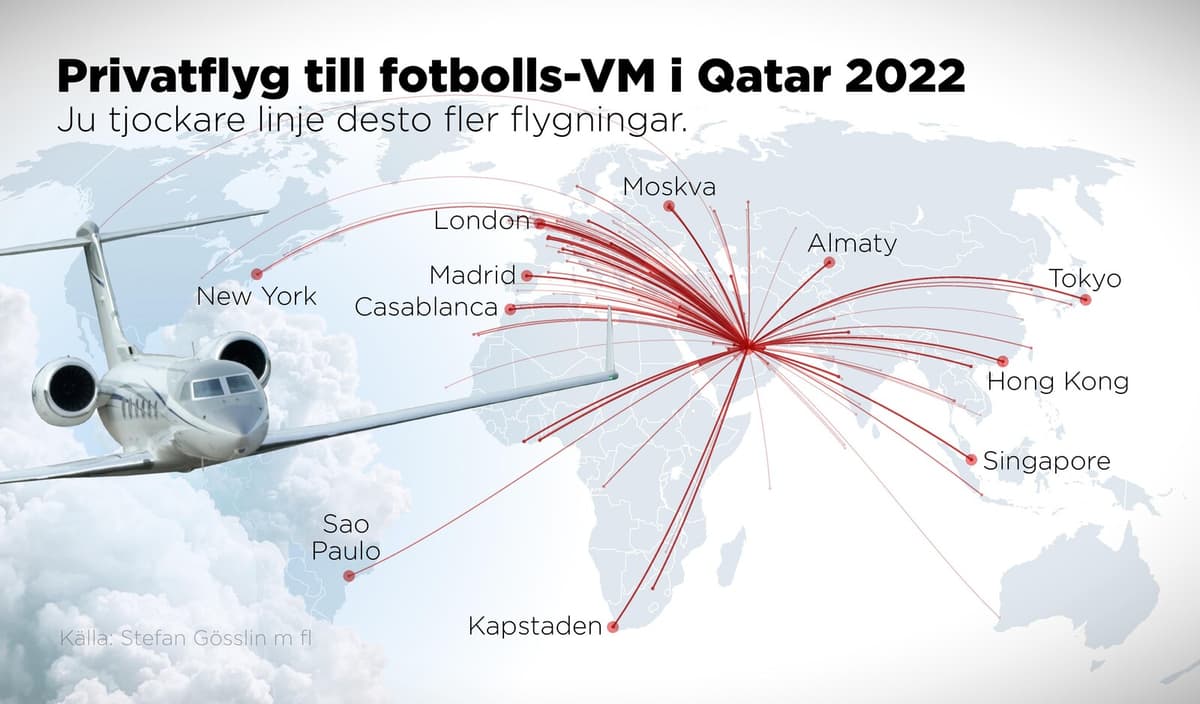Shorter than 50 kilometers and over weekends. Or to an island with a pleasant climate. These are common routes for all private planes flying around and emitting carbon dioxide into the atmosphere.
In a recent study where researchers from, among others, Sweden participated, patterns from private planes are clearly visible. These are largely trips that are relatively short, sometimes just a few miles, and are often made over weekends.
The researchers have analyzed flights made by private planes between 2019 and 2023. Based on aircraft models and routes, they have calculated how much carbon dioxide emissions they have caused. In total, this amounts to around 16 of the 850 megatons of carbon dioxide that air traffic emits globally per year.
Climate meeting attracts
Trips to the Canary Islands, Seychelles, or Mauritius are rarely business trips, says Stefan Gössling, professor of tourism science at Linnaeus University, who, among other things, researches the climate impact of tourism.
In addition to vacation destinations, there are certain major events that attract a very large number of private planes. Some examples are the World Championship in Qatar, the film festival in Cannes, the World Economic Forum in Davos, and ironically, the UN Climate Meeting COP28 in Dubai. How many private flights this year's meeting, which starts on Monday, will attract, remains to be seen.
Furthermore, there are additional emissions because it is often expensive to park the plane in, for example, Davos. Then, the owners save money by letting the plane fly a bit further away. They save money but create an environmental cost for everyone else, says Stefan Gössling.
The rich should pay
Between 2019 and 2023, carbon dioxide emissions from private flights increased by 46 percent. The USA is the country where most private planes are registered – nearly 70 percent of all private flights are registered there.
Stefan Gössling does not think that emissions from private flights can be ignored, even though commercial flights account for a much larger share. Small planes with few seats lead to significantly more emissions per person than a commercial flight.
It's obviously about people with money. It costs to transition to a low-emission society, so those with the most money should pay for their private flights through higher taxes. But it would have a signal value.
The study is published in Communications Earth & Environment.





